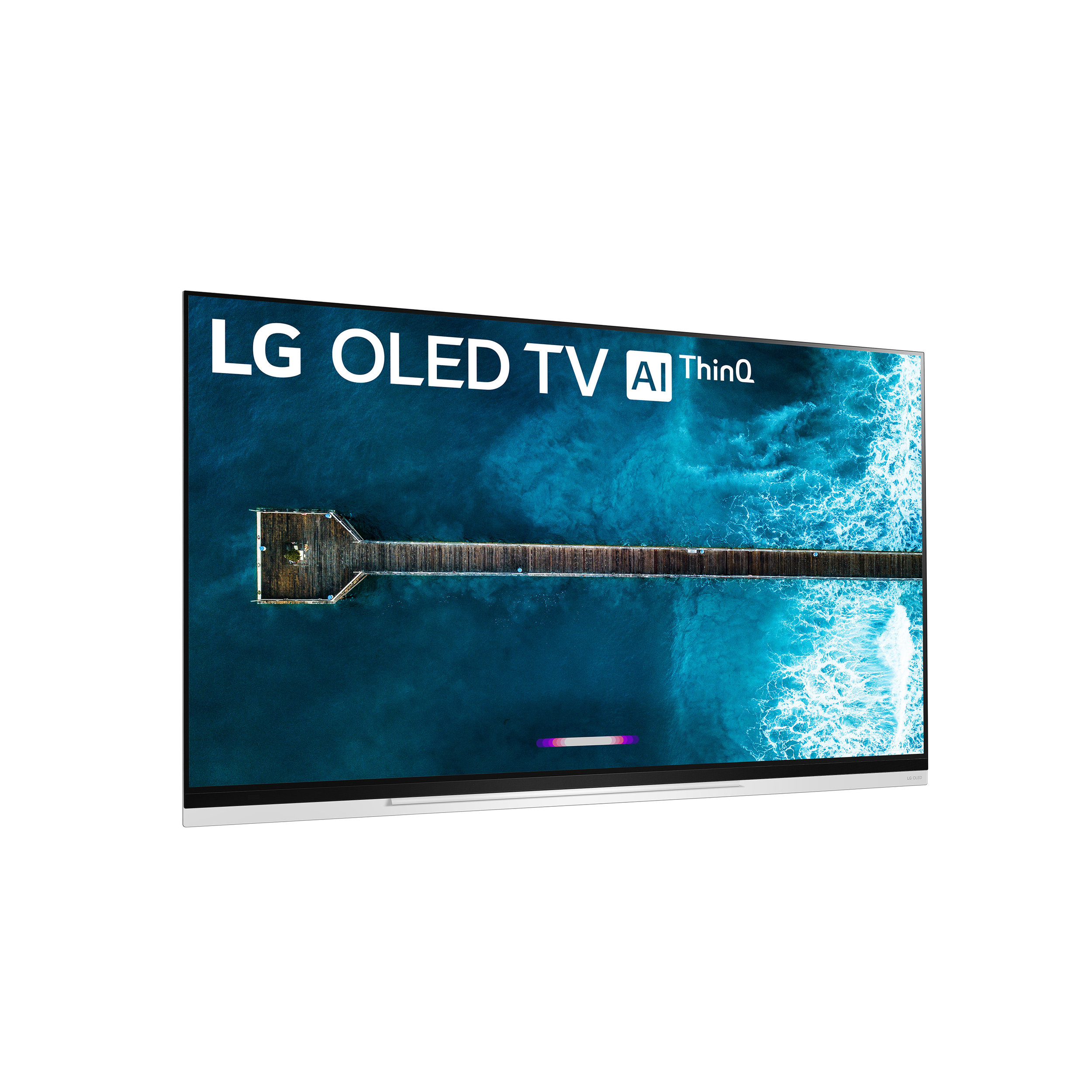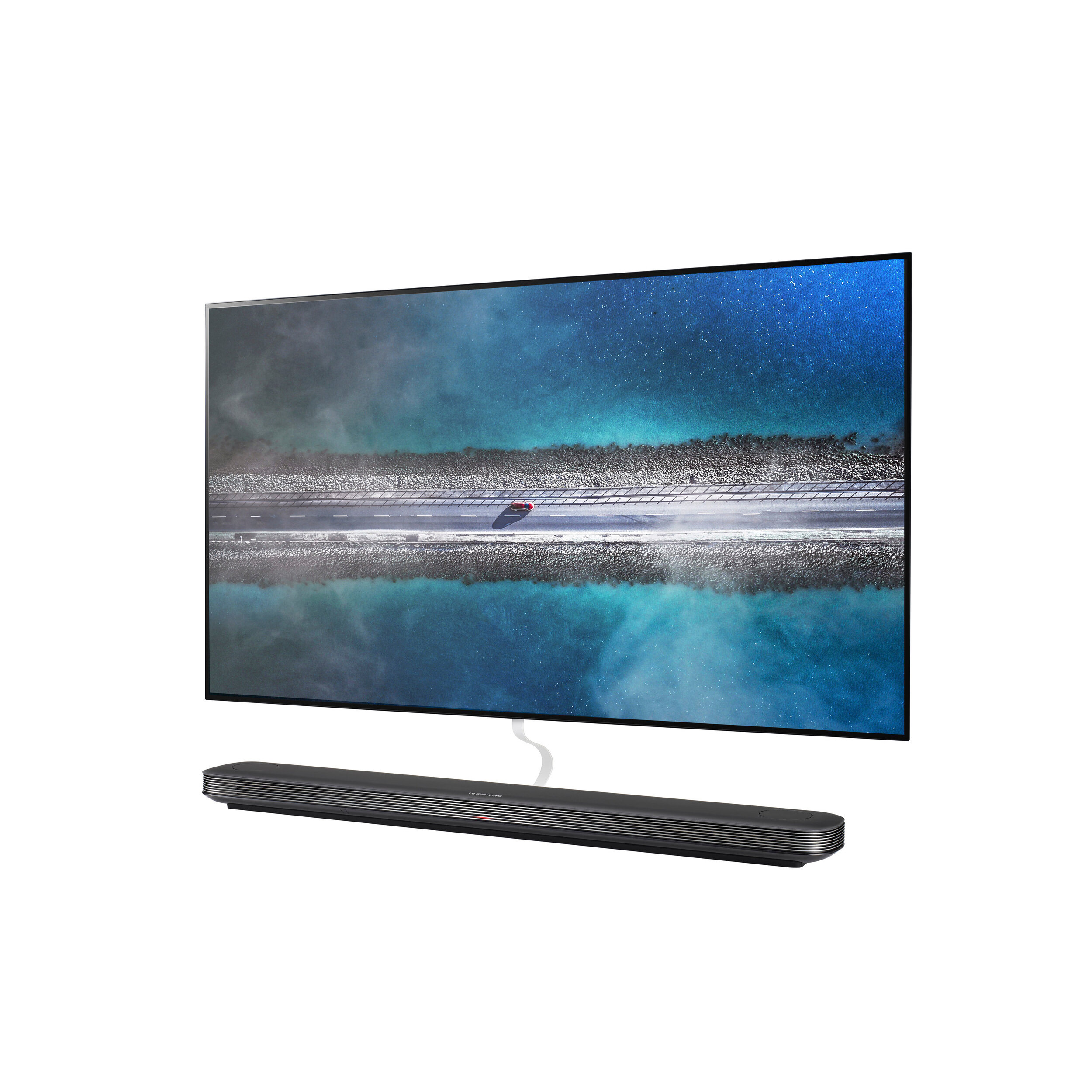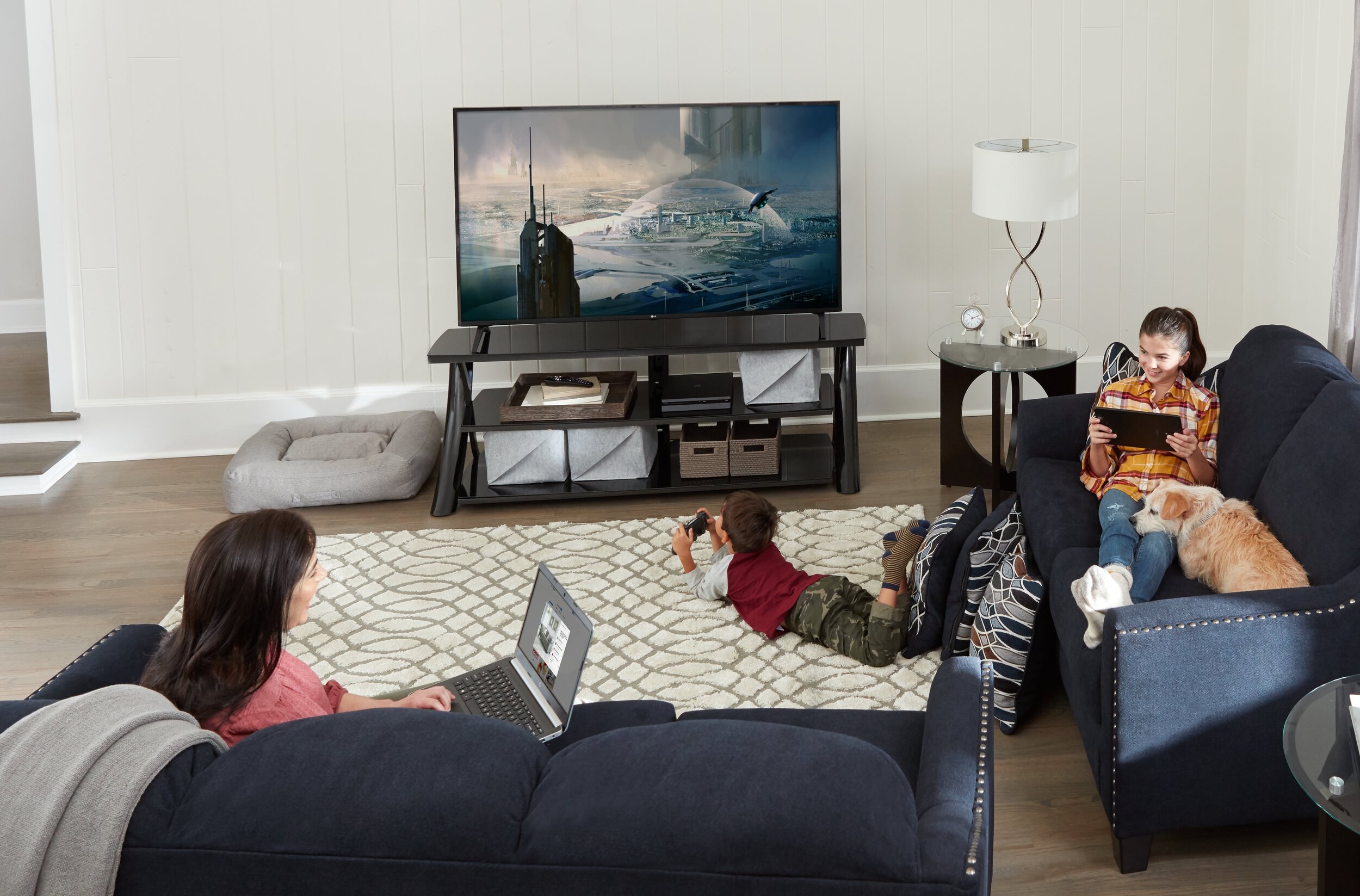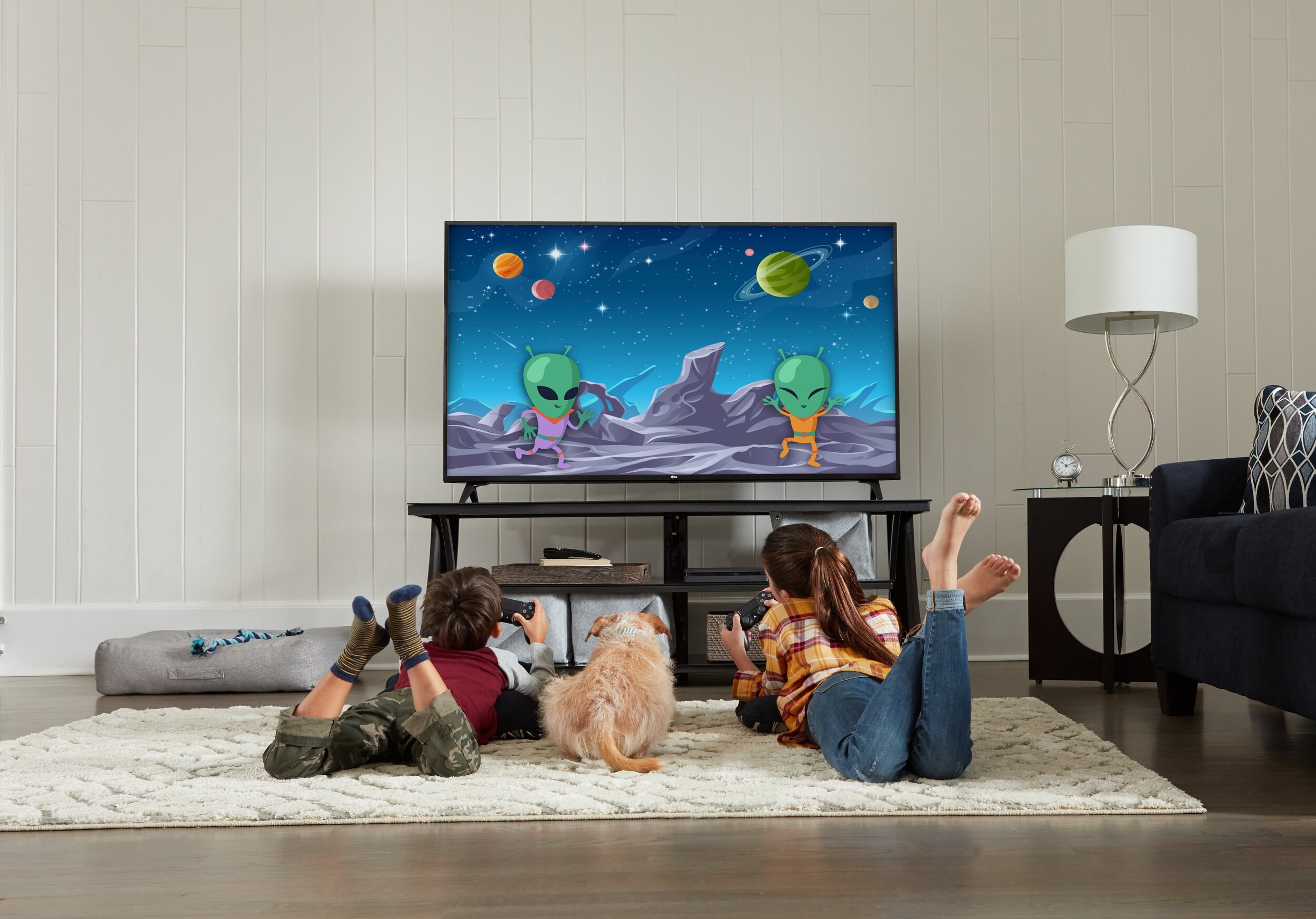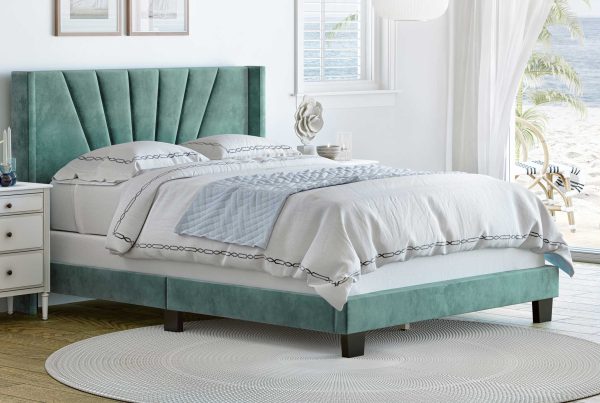Bigger isn’t always better when it comes to TVs. Sure, a huge screen can look impressive, but if it doesn’t fit your room—or if you’re sitting too close—it can make watching uncomfortable. To help you pick the perfect TV size, let’s walk through the key factors that matter most.
1. Understanding TV Dimensions
When you shop for a TV, screen size is usually the first number you see. But there are a few more measurements that matter when you’re fitting your TV into a space.
Here are four ways you should be measuring your TV:
- Screen Size: Measured diagonally from corner to corner. Common sizes include 55″, 65″, and 75″.
- Height (with stand): Includes the base or legs attached to the TV.
- Height (without stand): The screen only, without the stand.
- Width: Measured across the front of the screen from left to right.
2. Room Size + TV Placement
The size of your room and where you’ll place the TV have a big impact on what size is right.
- Living Room: Larger screens (65”+) are common since seating is farther away.
- Bedroom: Smaller TVs (32”–50”) often work best since you’re closer to the screen.
- Media Rooms: If you want a cinematic feel, go big—but make sure the seating distance is correct (see chart below).
Also consider eye level: when sitting, the middle of the screen should line up with your eyes for the most comfortable viewing.
3. TV Size + Resolution
Resolution matters as much as size. The higher the resolution, the closer you can sit without noticing pixels.
- 1080p (Full HD): Still common in smaller TVs under 40″. Best viewed from farther away.
- 4K UHD: Standard for most modern TVs. Crisp, detailed picture even on 55”–85” screens.
- 8K: Premium option, most noticeable on 75”+ screens.
4. Distance + Picture Quality
Wondering how far you should sit from your TV? Use this simple guide:
| TV Size | Recommended Viewing Distance (4K UHD) | Recommended Viewing Distance (1080p) |
| 40″ | 3–5 feet | 5–8 feet |
| 55″ | 4.5–7 feet | 7–11 feet |
| 65″ | 5.5–9 feet | 9–13 feet |
| 75″ | 6.5–10.5 feet | 10–15 feet |
With 4K TVs, you can sit closer without seeing pixelation, making larger screens a better fit in smaller rooms than ever before.
Bottom Line: Choosing Your Best TV Size
Picking the right TV isn’t just about going as big as possible—it’s about finding a screen size that works for your room, your budget, and your viewing habits.
Still unsure? Check out our TV shopping guide for more tips, or browse Aaron’s TV selection today to find the perfect fit for your home.

